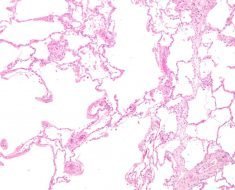Fentanyl is a potent analgesic almost a hundred times stronger than morphine that is used as an anesthetic and in the management of chronic and breakthrough pain.
However, drug abusers also sometimes use fentanyl as a recreational drug. This first started to happen in the mid 1970s, almost a decade after fentanyl was first synthesized and introduced into medical practice. Fentanyl is classified by the US authorities as a narcotic and to date, twelve fentanyl analogues that have been developed for use on the street have been identified by drug traffic teams.
The effects of fentanyl and its analogues are similar to that of heroin, although users of the drug report that the “high” is less intense than with heroin, while the sedative effects are stronger. Fentanyl is also a very short-acting drug which means it quickly becomes addictive to users who want to maintain their high. Fentanyl is nearly a hundred times more potent that heroin and users are at an even greater risk of respiratory depression when using fentanyl. Fentanyl is taken in different ways and can be smoked, snorted or injected.
Fentanyl transdermal patches are also sold on the black market for drug users to buy. Aside from applying the patches to the skin, abusers may cut up the patches and eat them or take the gel from inside and smoke it. To prevent this abuse, the fentanyl patch the Durogesic patch was developed which contains the fentanyl throughout its plastic matrix rather than inside a gel. Fentanyl lollipops and lozenges are also sold on the black market. Actiq fentanyl lollipops, for example, are sold as percopop on the streets.
Some drug dealers mix fentanyl with other drugs to make them stronger or to improve low quality drugs. In 2006, mixtures of fentanyl with cocaine or heroin caused an outbreak of deaths in various cities across the United States including Chicago, Philadelphia, Detroit, New Jersey and Dallas, amongst others. Two of the street names that exist for a mixture of fentanyl and heroin are “magic “ and “bomb.”
Some examples of fentanyl analogues inlcude α-methylfentanyl, 3-Methylfentanyl, Acetyl-α-methylfentanyl, 3-Methylthiofentanyl, α-methylthiofentanyl, β-hydroxyfentanyl, β-hydroxy-3-methylfentanyl, Thiofentanyl, and ''p''-flurorofentanyl.
Sources
- rcp.nshealth.ca/…/fentanyl.pdf
- www.fda.gov/…/UCM162427.pdf
- www.nps.org.au/…/fentanyl-patches
- http://www.medsafe.govt.nz/profs/datasheet/f/Fentanylinj.pdf
Further Reading
- All Fentanyl Content
- What is Fentanyl?
- Fentanyl History
- Fentanyl Chemistry
Last Updated: Feb 26, 2019

Written by
Dr. Ananya Mandal
Dr. Ananya Mandal is a doctor by profession, lecturer by vocation and a medical writer by passion. She specialized in Clinical Pharmacology after her bachelor's (MBBS). For her, health communication is not just writing complicated reviews for professionals but making medical knowledge understandable and available to the general public as well.
Source: Read Full Article





